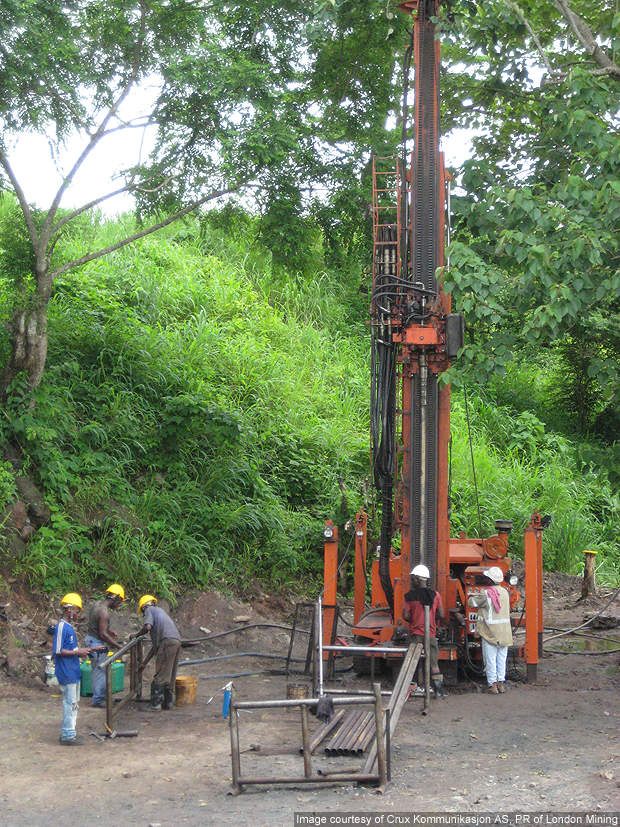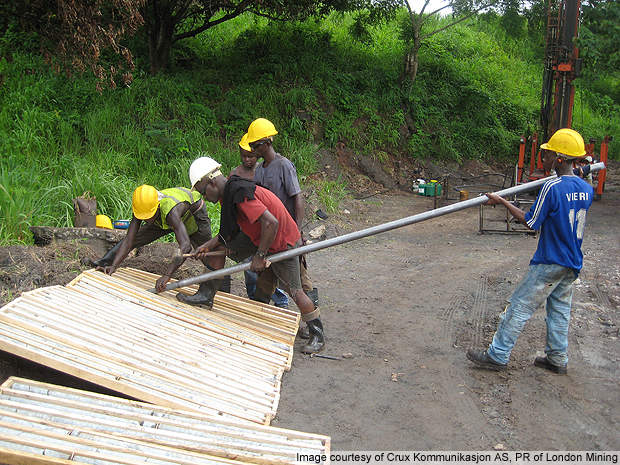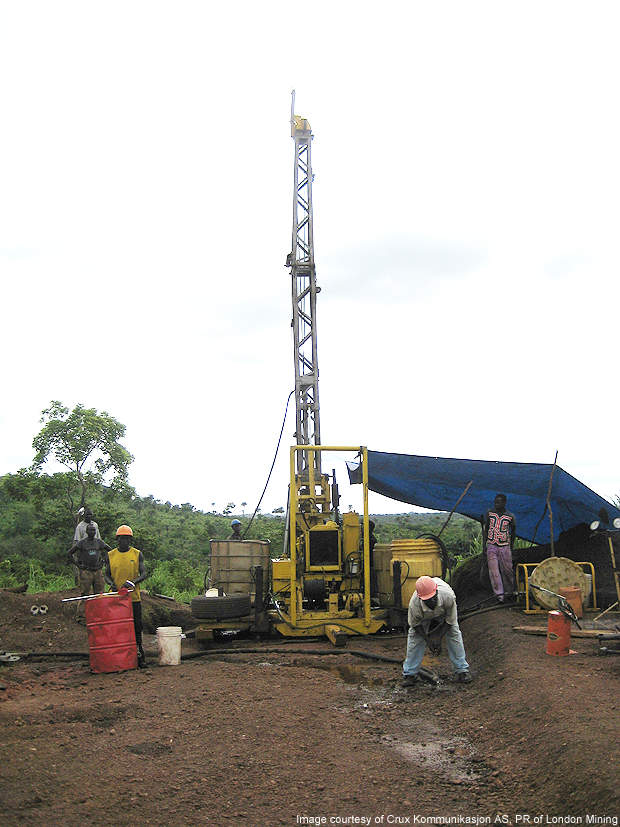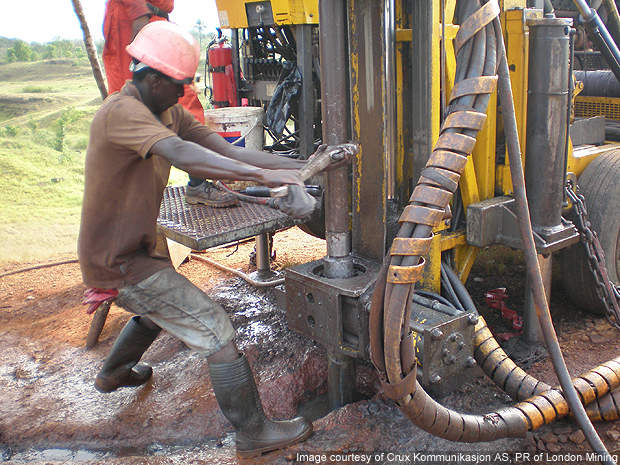The Marampa mine is a brownfield haematite iron ore mine located approximately 150km north-east of Freetown in Sierra Leone, West Africa. 100% owned by London Mining, the project includes a 319km² exploration licence that borders the Marampa mining lease, which was mined extensively between 1933 and 1975 by the Development Corporation of Sierra Leone (DELCO). The property was acquired by London Mining in 2006.
Full development of the project began on 11 February 2010 on receiving final parliamentary approval. The project will also include an $80m tailings reprocessing development operation that is expected to result in an output of 1.5Mtpa by 2011. The $85m operation will be expanded in a phased manner to 3Mtpa before production from the primary resource begins. Primary resource mining will increase production to between 5Mtpa and 8Mtpa upon completion of the project, by the end of 2013. Decision on the expansion remains pending in a pre-feasibility study that is scheduled for completion by the end of 2010.
The development will initially be fast tracked into production before expanding to a larger scale, thereby achieving short-term cashflow. The mine has historically operated at a peak production of 2.5Mtpa before it was suspended owing to low iron ore prices in the 1960s.
Marampa reserves
The Marampa mining lease combines two main ore deposits at the Masoboin hill and the Ghafal hill besides tailing deposits from earlier operation that cover low ground directly east of the Masaboin hill. Ten tailings deposits account for 85% of the estimated tailings tonnage and five peripheral deposits account for the balance.
The primary ore bodies within the deposit consist of 122.8Mt inferred resources graded at 31.19% Fe. The tailings portion of the mine contains an estimated 42.5Mt of indicated resources graded at 21.67% Fe.
Haematite iron ore geology
The deposit lies within the Marampa Schist formation, a pre-Cambrian aged complex structure that hosts one primary quartz haematite schist horizon. The horizon that ranges in thickness up to 65m is isoclinally folded and thrusted, plunges east southeast at 45° to 85° and has steep contact with its quartz mica schist host rock. At least four stages of deformation have occurred at the schist. Iron oxide minerals formed due to prograde metamorphism include specularite-haematite (up to 60 modal%) and subordinate magnetite (usually less than 2-3 modal%). The schist hosts ultramafic and mafic units but does not include any detrital zircons of the Archaean period.
Mining and processing
The tailings resource will be extracted using conventional techniques including the truck and shovel method and hydraulic mining. A two-phase high intensity magnetic separation process will result in 65.5% iron with 2.5% SiO2 and 2.9% Al2O3 from approximately 3t of tailings. A milling circuit, if included, will produce higher-grade 67.1% iron with 1.2% SiO2 and 2.1% Al2O3. This option is however currently not being considered as the demand for lower-grade Marampa products is higher in the region.
The concentrate will be hauled to barge-loading facilities located at Tawfayim on Loko Creek, 40km from the mine site. It will be shipped from there to floating cranes, 60km offshore for loading at a place that accommodates Handymax, Panamax and Capesize ships.
The mine is connected to Tawfayim via a 22km tarmac road besides a 18 laterite road that is currently under construction. The road will be ready for use before mine production starts.
Marampa exploration and drilling
Exploration activities at the mine have identified a number of iron ore prospects. These include outliers and extensions of the same formation that hosted the iron mined during operations by DECLO. A significant amount of iron ore tailings on the mine area that were remnants of DELCO operations have also been identified.
By the end of 2009, London Mining had drilled 2,700m on the primary ore deposits. It plans to complete a further 6,000m of drilling in 2010. Successful completion of the drilling programme will allow the company to obtain a JORC-compliant estimate for the main ore resource besides completing the pre-feasibility study.








